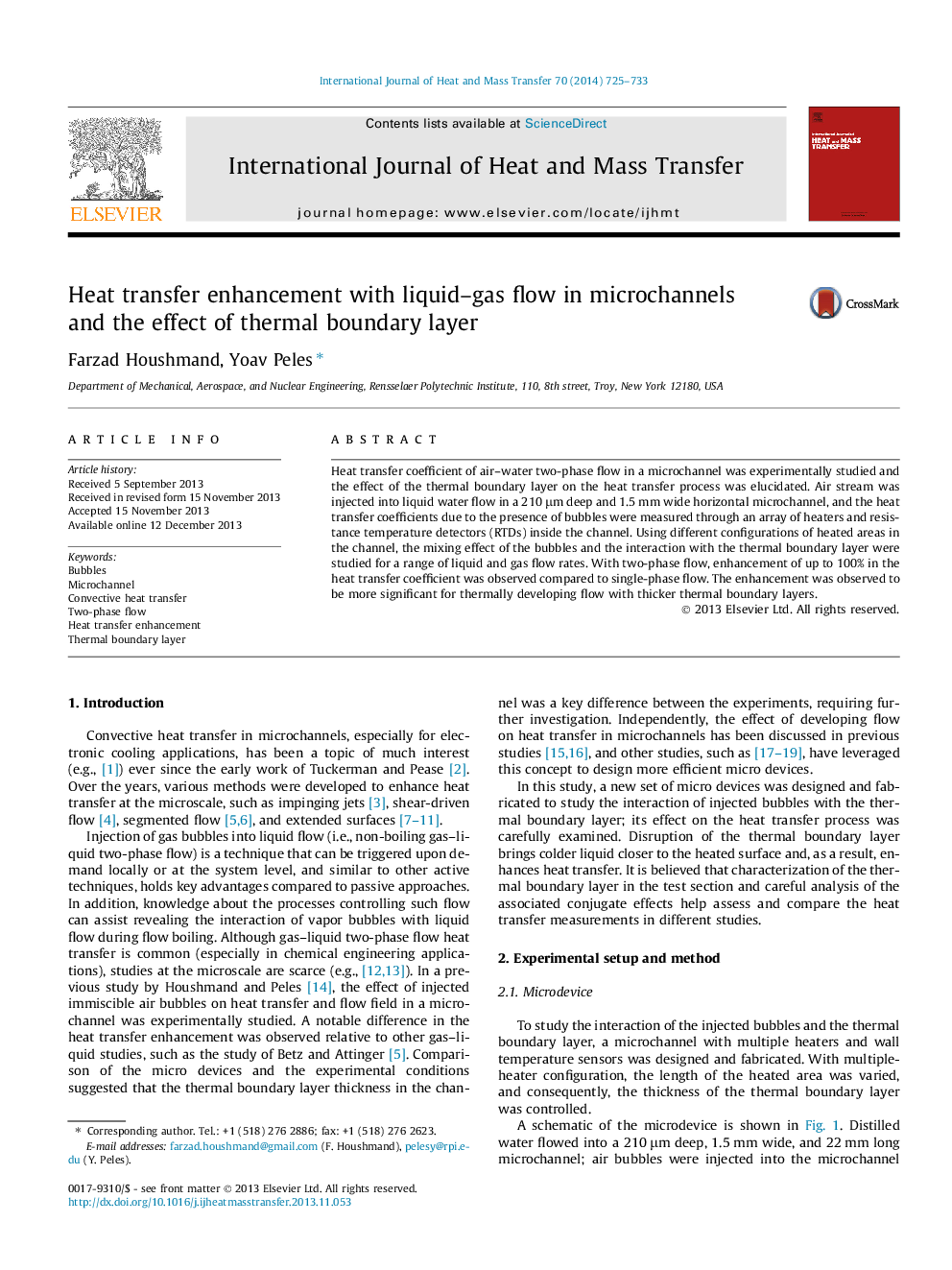| Article ID | Journal | Published Year | Pages | File Type |
|---|---|---|---|---|
| 657636 | International Journal of Heat and Mass Transfer | 2014 | 9 Pages |
Heat transfer coefficient of air–water two-phase flow in a microchannel was experimentally studied and the effect of the thermal boundary layer on the heat transfer process was elucidated. Air stream was injected into liquid water flow in a 210 μm deep and 1.5 mm wide horizontal microchannel, and the heat transfer coefficients due to the presence of bubbles were measured through an array of heaters and resistance temperature detectors (RTDs) inside the channel. Using different configurations of heated areas in the channel, the mixing effect of the bubbles and the interaction with the thermal boundary layer were studied for a range of liquid and gas flow rates. With two-phase flow, enhancement of up to 100% in the heat transfer coefficient was observed compared to single-phase flow. The enhancement was observed to be more significant for thermally developing flow with thicker thermal boundary layers.
